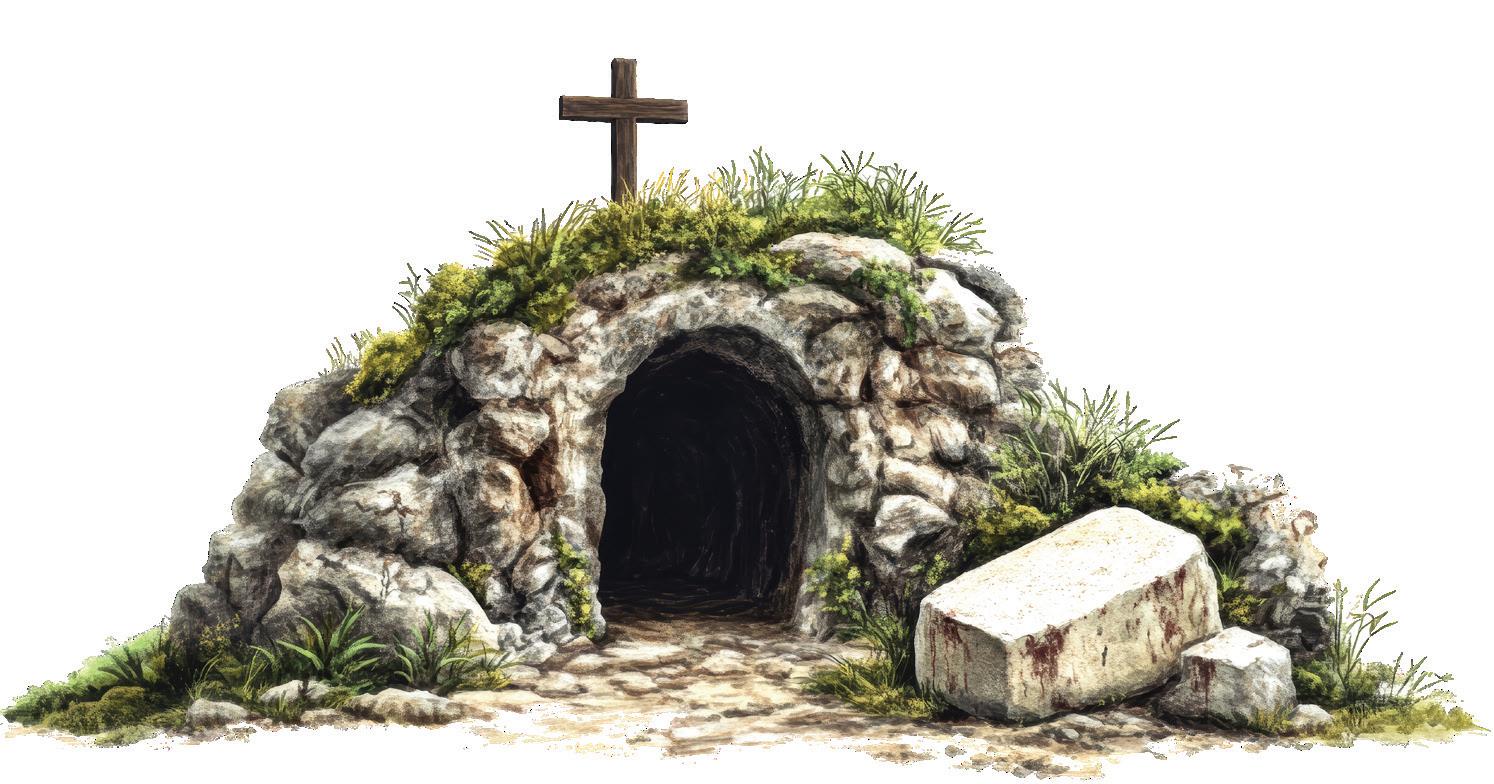
May 2025
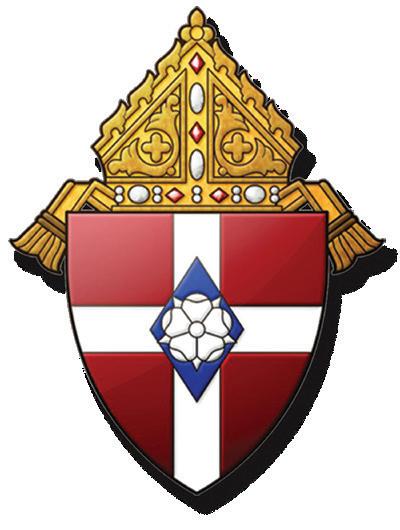



◆ In this edition of The Arimathean , there is an article on one parish cluster's journey to bolster their Permanent Care Fund through a well-organized and successful campaign to raise much needed funds. One of my take-aways from this effort was the many people who assisted with the heavy lifting of the campaign. The work was shared by many and not left for the Catholic Cemetery Association members and Trustees. As one pastor once said to me “Many hands make light work!” Special thanks to Dana Clarke for writing the article and sharing their “journey.”
◆ While it has been our “Gold Standard in Permanent Care Funding,” the $25,000-peracre rule is a one-size-fits-all approach. It assumes that the maintenance cost for each cemetery and investment of return are the same, and it does not provide an allowance for inflation. As a tangent to Dana Clarke’s article, I have included a “Permanent Care Fund calculator” of sorts, and a guide. This will enable you to tailor your Permanent Care Fund estimate.
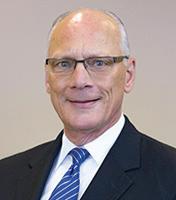
◆ Reminder: If you have a “notable” person(s) interred in your Catholic cemetery and would like to share their story for publication in an issue of The Arimathean, please send me an email with their photo (if available), a photo of their grave monument and a history of the deceased.
◆ If you are in need of Permanent Care Certificate books, please email your request to Ann Ringlien at aringlien@ dowr.org
◆ A reminder to please notify Ann Ringlien or me if you change your email address, home address or phone number. We want to be sure that we have your correct information.
Peace and all good, Larry Dose
By DANA CLARKE
�y name is Dana Clarke, I am the bookkeeper for the three parishes of St. Ann, Slayton; St. Columba, Iona (recently closed); and St. Mary, Lake Wilson (recently closed).
This is how it all started. Several years ago, and at varying times, three sets of cemetery books came into the parish office – St. Ann(e) Cemetery, St. Rose of Lima Cemetery, Avoca; and St. Columba Cemetery, Iona. Previously, the cemetery books were held by each cemetery’s individual trustee and were not in the parish system.
Learning the parish and cemetery processes can be an intense endeavor. I, along with parish members interested in knowing more about the cemetery, needed to attend seminars, meetings, workshops, and webinars to learn how everything worked and terminology used, for instance, Permanent Care!
I had many phone conversations with Julia Sandsness, who, at that time, answered cemetery questions at the diocesan office. I learned many things from Julia; Ann Ringlien now answers the questions and is a great resource for cemetery information. It was through the phone conversations that I came to understand what Permanent Care was: the funds that are required to have on hand, by the State of Minnesota ($25,000.00 per acre of cemetery land) and how the money can
be used. The list grew.
After getting the cemetery books set up in the parish office where Statements of Financial Position could be printed out and looked at by the parish Finance Councils, our councils started to realize that our Permanent Care Funds were severely underfunded.
Toward the end of 2019 one of the Avoca cemetery trustees, Dan Tentinger, came to my office and as we talked about different cemetery issues the permanent care came up. We looked at each other and realized we had no idea how to close a $58,000 gap which existed in the required funds. I explained to Dan that all of our cemeteries fell short of the State/Diocese required Permanent Care amounts.
Weeks later Dan was back in the office again to talk about the cemetery. During our conversation he chuckled and stated that he should send a letter to someone for help with general maintenance, not permanent care. After he left the office it occurred to me that I should talk to each of the parish finance councils and cemetery trustees to see if they would approve sending out a letter asking for monetary help for the three cemeteries. Between the three we fell just over $157,000.00 short. An idea was growing…
I myself learned about Permanent Care from a cemetery workshop put on by the diocese, I had no idea it even existed. I found out some of the parishioners knew what it was, especially the older generation who recalled giving to their cemetery to make sure it would be looked after long after they were gone. They called it Perpetual Care.
I began to wonder how many other people have never heard of this or let alone, even knew what it was. Weeks, then months continued to pass by. The councils had approved sending out a letter and the trustees of each cemetery also agreed that this would be worth a shot. A council member of St. Ann, Pam Johnson, volunteered to help me with the project we were about to undertake.
To start the process we made announcements at all the Masses and put a blurb in the bulletin asking parishioners to submit addresses of anyone living they had and were willing to share that would give descendants of those buried in our cemeteries an opportunity to help with donations. We were going to do it for all three, St. Ann(e), St. Columba, and St. Rose of Lima.
Our parishioners were phenomenal in providing addresses. Some sent in as many as 30 plus addresses. We desperately relied on those with deep ties and connections to our communities to put this together. Pam was a huge asset since she grew up in the Slayton community. She knew connections within families. We also had Mary Staples as a volunteer, she too had many ties to the community. Pam and Mary were both an integral part of compiling information and putting this together. A helpful hint: If any parish/cemetery considers doing this, you need those who have ties and a lot of historical connectionsthis was key! Marilyn Barry from the Lake Wilson Church and JoAnn Biren from Iona were also a huge help with address connections and collection. Elaine Gaul had connections and addresses for the St. Rose of Lima Cemetery in Avoca and provided dozens of addresses to us. St. Columba volunteers had recently written a cookbook that went out far and wide to long ago parishioners and those addresses were at the beginning of their list to contact.
The all-consuming part of the process was left to Pam Johnson who took the addresses and entered them all into a spreadsheet on the computer. We would meet to do searches or figure out more missed names. We looked through older parish directories, and the website AnyWho.com became our friend for finding addresses for many people. When finished, Pam had compiled more than 700 addresses into the spreadsheet. We set the date of early May 2021 as our goal for sending out the letter so families would receive it before Me-
morial Day. We met our goal date; folded and stuffed and sent them off. Letters were sent to every state across the U.S. except Hawaii. Only seven were returned as unable to forward - not bad! Many of our parishioners, and AnyWho, had come through for us!
Lawrence (Larry) Dose, Director of Catholic Cemeteries, Diocese of Winona-Rochester, has included our letter, in template form, with this article. You can adjust it for your use if you would like to use it. We did not want the letter longer than one page. We needed to be sure people understood why they were receiving a letter. We needed to explain what Permanent Care was. We wanted to provide the amounts so they could read for themselves why we were asking for money, not an easy thing to do, ever. We encouraged them to share the letter with people and other family members we might have missed due to no address.
One letter for the three cemeteries was sent, it was important for the recipient of the letter to indicate which cemetery they were contributing to. And, people needed to know that the donation is tax deductible and, most importantly, we wanted them to understand this money was for permanent care only. It was not going to the parishes or to the diocese but would remain in the cemeteries accounts.
Unforeseen happenings did occur:
• I received a call from a family member who had not received a letter directly from the parish office but some of her siblings had. She was upset that she was missed and had gotten word through the family, as we had asked in the letter. After our conversation it all ended on a pleasant note.
• We used matching parish letterhead and envelopes when mailing. The office received a call; I answered the phone with “St. Ann Church…” she was content. She told me there are so many scams out there and she wanted to verify before sending money. I thanked
her for calling as this was something we had not considered. But she said the letterhead, envelope, and answering of the phone all matched.
• A person called wanting verification loved ones were in the cemetery before donating. They gave eight names of the deceased and wanted to know in which cemetery each was buried. After looking through the interment books and using “find a grave” for the last two names, I called them back. Six names were in our three cemeteries and the last two in surrounding Catholic cemeteries; Worthington and Wilmont benefited. They asked where they could mail those checks, so I provided the addresses and told them to enclose a note stating what it was for - Cemetery Permanent Care. Shortly after the call, a check was received for $200 per deceased name. The money was then divided into each corresponding cemetery.
• Later, we were told by parishioners that they called churches where their ancestors were buried to see if they had permanent
care. After realizing permanent care was accepted in other states, they sent donations to those cemeteries. Why? Because people were learning what permanent care was and the good it would do. When people are informed, they can then make an informed decision.
Was this successful? Definitely! It took time. It took commitment. Why did it happen? The books were brought into the parish office instead of remaining in trustees’ homes. The trustees were doing an excellent job, don’t think that they were not! But bringing in the books and having more people review the finances it was realized that we were underfunded. Working together through this process, an idea developed and came to fruition, which ended up benefitting our cemeteries. We have trustees that deeply care about the cemeteries and who do a great deal of work with the cemeteries. Numerous cemeteries do. I know it was hard for them to turn over the books, they were wonderful educators for me, and I continue to use their knowledge and thank them for their ongoing help.
So, you may wonder how did it turn out for our cemeteries? The
Permanent Care Fund has been met for both St. Ann(e) Cemetery and St. Columba Cemetery, along with a significant gap reduction for St. Rose of Lima! The letter has stimulated over $100,000 worth of donations! Some people now give annually to the permanent care. IRA contributions still come in. Calls are still received from people who, when the letter was sent out, were unable to donate but have held onto the letter and are donating now.
The nicest result is that everyone helped from all over the United States to donate and “chip in” it didn’t fall on only the local people. Our final step was acknowledging those who donated. It was discussed to do a handwritten, thank you note. Several would gather and write out thank you cards until the quantity of donations dropped down to a more manageable amount for one person. This was something our parish/cemeteries felt was important to do, regardless of the amount they contributed to the Permanent Care account.
We are very grateful for the result and outcome the letter generated. If you have any questions, need additional information, want to visit by phone, or need the template contact the St. Ann office or Larry Dose. We would be thrilled to help you get started!
Formula for calculating Permanent Care Fund Balance Target: T = C ÷ (R – I)
(T) = Permanent Care Fund Target; (C) = Current cost of maintaining the portion of your cemetery that is already sold on which you will not receive more income yet need to maintain; (R) = Expected annual Rate of Return on Permanent Care Funds; (I) = Rate of Inflation
Example:
Current costs (C) = $3,000 annually
Expected rate of return (R) = .07
Rate of inflation (I) = .025
3000[C] ÷ (.07[R] - .025[ I ]) = $75,000[T]
$3,000 [C] ÷ .07[R] -.025[ I ] = $75,000 [T]
$3,000 [C] ÷ .045[R - I] = $66,600. [T]
Minimum Permanent Care Funds Target = $66,600.
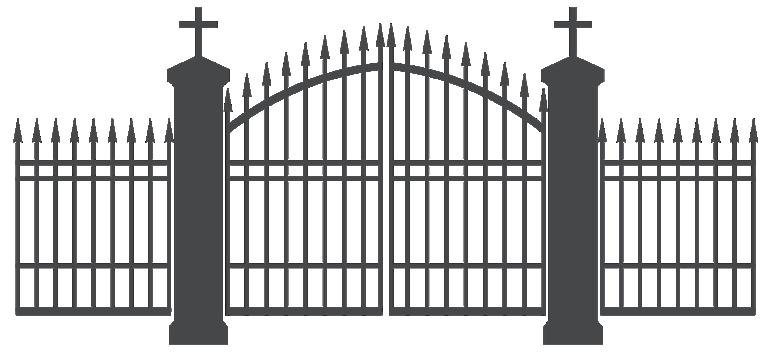
Note: Consider using 2.5% for an avergae rate of inflation. The U.S. 1995-2025 average rate of inflation was 2.5%. Also adjust the Rate of return to reflect your current Rate of Return. The resulting balance needed is a target and should be reviewed and refreshed annually.
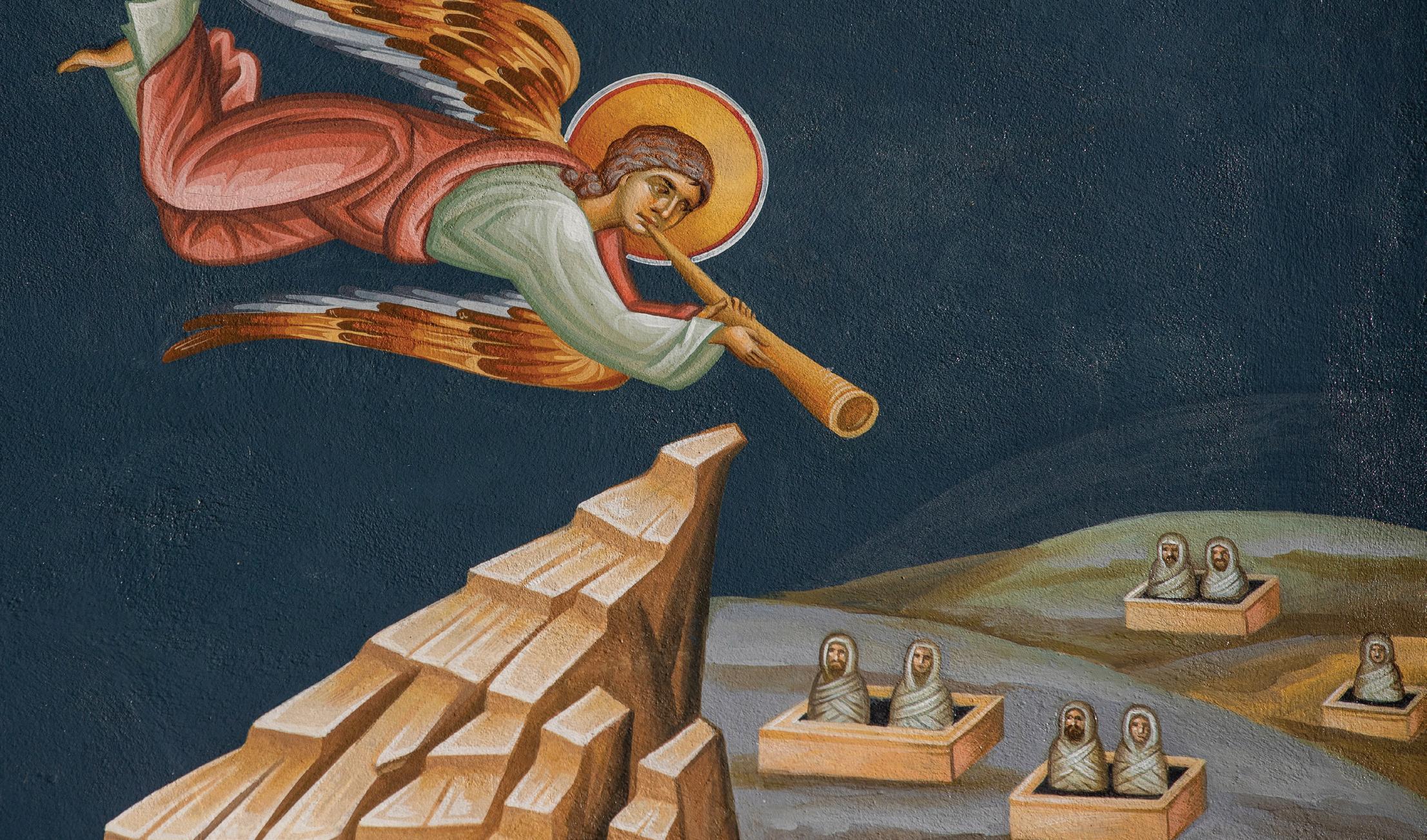
The following article was first printed in the parish bulletins of Pax Christi Parish in Rochester and Ss. Peter & Paul Parish in Mazeppa, in November 2024.
By REV. JOHN SAUER
� s we continue to move through November, which has been a time of reflection and prayer for the dead, I am working through some of the questions I frequently receive. One of these questions is about the Church’s teaching on cremation. Prior to 1963 the Church did not allow for cremation, following only the manner of Christ’s burial by either entombing or burying the body. Part of the historical reason for this is that the Roman empire would burn the bodies of the martyrs as a way of denying the resurrection. While few of us choose cremation to deny the resurrection, even today, the Church has a preference for the traditional way of the body to return to the dust from which we came.
The revised Code of Canon Law (1983) helps us understand that the lifting of the prohibition against cremation for Catholics was not intended as an endorsement. Canon 1176 states: “The
Church earnestly recommends the pious custom of burying the bodies of the dead be observed, it does not however, forbid cremation unless it has been chosen for reasons which are contrary to Christian teaching.” The Church now allows for cremation of the body, providing that family members making that decision are not doing so because they fear the body is lost forever and has no future together in Christ with the immortal soul. Some of you may remember that, even after the prohibition was lifted, the cremated remains were not allowed in the Church during the funeral. This was changed in 1997. But what has not changed is the Church’s clear teaching that the cremated remains must be treated with respect and that they should be entombed or buried as would happen with a traditional bodily burial. Why does the Church take this stance? Because every human has been created in the image of God and every man and woman is a unity of body and soul, respect for the person necessarily includes respect for the body. For this reason, the Church considers burial to be the most appropriate way of manifesting reverence for the body of the deceased as it clearly expresses
our faith and hope in the resurrection of the body. In fact, even when cremation is chosen, the Church’s preference is for the body to be present for the final rites and funeral and then the cremation happens afterwards.
Some of you who knew Fr. Michael Cronin might remember this was the approach he chose. While it may entail additional cost and inconvenience, your funeral home can help you with the planning for this.
Finally, the question arises about proper disposition of the cremated remains. The Order of Christian Funerals states: “The practice of scattering cremated remains on the sea, from the air, or on the ground, or keeping cremated remains in the home of a relative or friend of the deceased are not the reverent disposition that the Church requires.” (Order of Christian Funerals, Appendix II)
If you have further questions or would like to properly dispose of remains that have not yet been buried, please feel free to contact [your local Catholic cemetery] and they will work with you.
May the souls of all the faithful departed rest in peace.
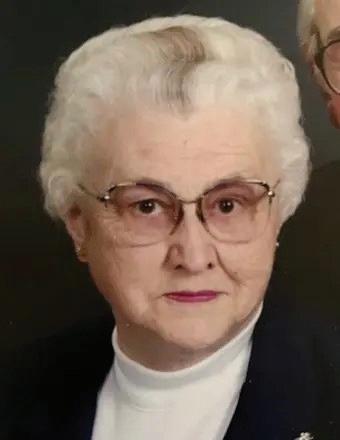
Magdalene Graner
Trustee, Calvary Catholic Cemetery, Madelia
Magdalene Graner died October 17, 2024, at the age of 97. “Maggie” and her husband Jim assumed the duties as Trustees for St. Agnes Cemetery Association, at Kellogg, MN in May of 1975, Jim passed away in March of 2018. Along with managing a dairy farm in Cooks Valley, rural Kellogg, teaching religious education, helping serve lunch at funerals, and raising their sons Mark and Kenny, Maggie and Jim always made time to keep the cemetery looking very pleasant and the books were always up to date. Their faith, church, and family were the cornerstone of their marriage and their corporal works at the cemetery gave them pride as members of St. Agnes Parish. Maggie passed the books on to the Association in 2018.
Submitted by Bill Hager, trustee for St. Agnes Catholic Cemetery Association
Submitted by RYAN CHRISTIANSON, AIC, ARM, Claims/Risk Manager II, Catholic Mutual Group
�
ccording to the MN OSHA Fact Sheet, MN Law requires employers to provide a work place free of hazards that may cause serious injury or death. This includes the Federal OSHA trenching and excavation requirements of 29 CRF 1926.651 Specific Excavation Requirements and 29 CRF 1926.652 Requirements for protective systems .
An excavation is any man made cut in an earth surface, formed by earth removal. A trench is a narrow excavation made below the surface of the ground, with depth greater than width. Dangers include cave-ins, falls, falling loads, and incidents involving mobile equipment.
OSHA standards require employers ensure trenches – before worker entry – are inspected by a competent person daily and as conditions change, to ensure elimination of excavation hazards. A competent person is an individual: who is capable of identifying existing and predictable hazards or working conditions that are hazardous, unsanitary or dangerous to workers; who understands soil types and the protective systems required; and who is authorized to take prompt corrective measures to eliminate these hazards and conditions. Trenches 5’ deep or greater require protective system unless the excavation is made entirely in stable rock. If the trench is fewer than 5’ deep, a competent person may determine a protective system is not
4’ or deeper, and must be located within 25’ of all workers. Protective systems include sloping, shoring, and shielding. General trenching and excavation rules:
• Keep heavy equipment away from trench edges.
• Identify other sources that might affect trench stability.
• Keep excavated soil and other material at least 2’ from trench edges.
• Know where underground utilities are located before digging.
• Test for atmospheric hazards, such as low oxygen, hazardous fumes and toxic gases when greater than 4’ deep.
• Inspect trenches at the start of each shift and following a rainstorm or other water intrusion.
• Do not work underneath suspended or raised loads and materials.
• Inspect trenches after any occurrence that could have changed conditions in the trench.
• Ensure personnel wear high-visibility or other suitable clothing when exposed to vehicular traffic or mobile earth-moving equipment.
[Director's Note:] Ryan Christianson, our Catholic Mutual Group claims risk manager, has completed 20 years of dedicated and loyal employment with Catholic Mutual Group. Ryan has served sively for the past 20 years. We are grateful for Ryan's commitment, dedication, professionalism and skilled experience. Thank you, Ryan, and congratulations on 20
